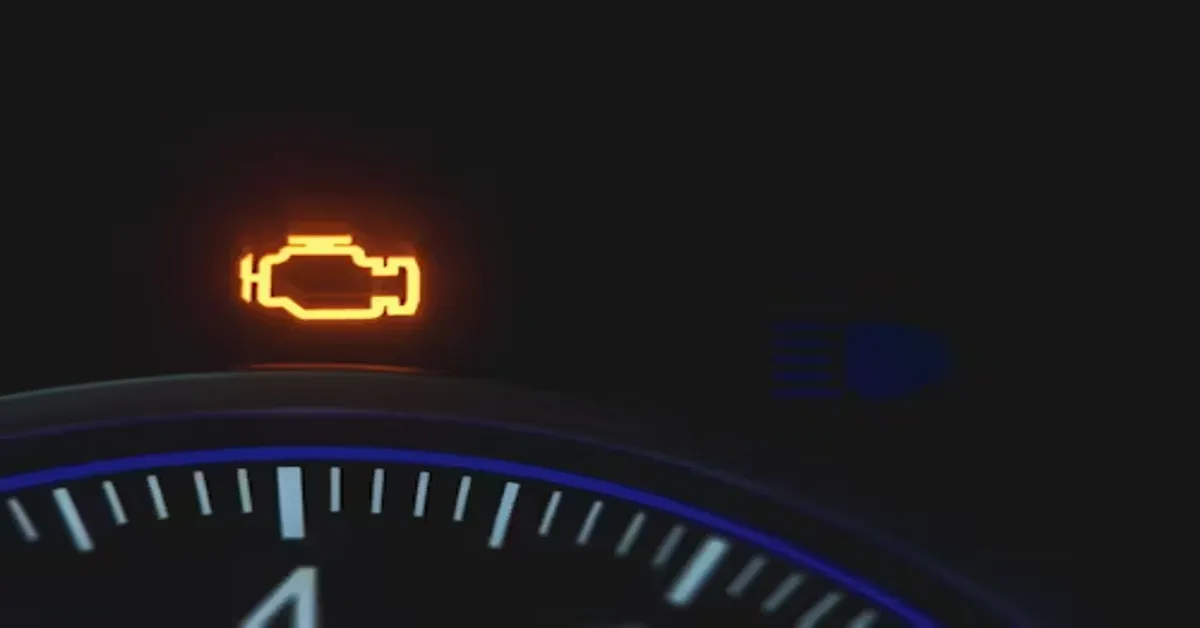The modern automobile is a marvel of engineering, incorporating intricate mechanical systems and sophisticated computer technology. One essential component of this technology is the On-Board Diagnostics (OBD) system, which constantly monitors the engine and its components for signs of trouble. One of the most familiar indicators of an issue within this system is the “check engine light flashing,” which usually appears as an illuminated engine icon on the dashboard. While many people have experienced a check engine light flashing turning on, there is a particularly alarming variation of this warning: a flashing check engine light. Unlike a steady light, a flashing engine light demands immediate attention and action.
Understanding why the check engine light flashing, what it signifies, the risks involved, and the correct steps to take can not only save your vehicle from major damage but also prevent costly repairs and even hazardous situations on the road. This comprehensive guide delves deep into all aspects of the check engine light flashing, from technical explanations to practical advice, to ensure you are fully informed and equipped to deal with this critical warning signal.
What Is the Check Engine Light?
The check engine light, also known as the malfunction indicator lamp (MIL), is part of your vehicle’s OBD system. Its function is to alert the driver to potential problems within the engine or emissions control system. When the vehicle’s computer detects a malfunction that could affect emissions or engine performance, it triggers the light to turn on.
The check engine light typically appears as a small, yellow or orange engine-shaped icon on the dashboard. It may also include the words “Check Engine” or “Service Engine Soon.” The light can either be solid or flashing, each conveying a different level of severity. While a solid light usually indicates a less immediate issue that should be checked soon, a flashing light is a serious warning that signifies a more critical problem requiring urgent attention.
Difference Between Solid and Flashing Check Engine Light
It’s crucial to distinguish between a steady and a check engine light flashing. A solid light generally means there is a problem in the system, but it’s not necessarily urgent. Examples include a loose gas cap, faulty oxygen sensor, or issues with emissions equipment. These issues may affect fuel economy or emissions but won’t typically lead to catastrophic engine damage if addressed within a reasonable time frame.
However, a check engine light flashing is different. It often signals a severe engine misfire that could cause unburned fuel to be dumped into the exhaust system. This fuel can ignite in the catalytic converter, causing it to overheat and potentially suffer irreversible damage. Since catalytic converters are expensive components and vital to emissions control, their failure can lead to costly repairs and environmental harm.
In essence, if the check engine light flashing, it is a sign of a significant malfunction that could lead to engine or emissions system damage if not resolved promptly.
Common Causes of a Flashing Check Engine Light
Several potential problems can cause the check engine light flashing. Understanding these causes helps you determine the seriousness of the issue and guide your response appropriately.
1. Engine Misfire
The most common cause of a check engine light flashing is an engine misfire. This happens when one or more of the engine’s cylinders do not fire properly. Misfires can result from issues like faulty spark plugs, ignition coils, fuel injectors, or engine timing problems.
When the air/fuel mixture in a cylinder fails to ignite properly, it can lead to unburned fuel entering the exhaust system. This not only harms performance and increases emissions but also poses a serious risk to the catalytic converter.
2. Ignition System Failure
A malfunction in the ignition system—comprising spark plugs, wires, coils, and the ignition control module—can disrupt the combustion process. If one of these components fails, it can result in an incomplete burn in the engine, triggering a misfire and causing the light to flash.
Modern ignition systems are controlled electronically, and a single failed component can affect multiple cylinders. This is especially concerning in engines with coil-on-plug systems, where a failed coil can significantly reduce performance and cause serious damage.
3. Fuel Delivery Problems
Problems in the fuel system, such as a failing fuel injector, clogged fuel filter, or malfunctioning fuel pump, can lead to insufficient fuel delivery to the engine cylinders. This imbalance affects combustion, potentially leading to misfires and triggering the flashing light.
Inconsistent fuel delivery can cause the engine to run lean (too much air, not enough fuel), which can overheat engine components, or rich (too much fuel), which increases the risk of unburned fuel damaging the catalytic converter.
4. Catalytic Converter Overheating
A flashing check engine light may also indicate that the catalytic converter is overheating. This could be a result of unburned fuel entering the exhaust due to misfires or other issues. When the converter overheats, it can cause the internal ceramic substrate to melt or crack, reducing its ability to filter harmful emissions.
This situation not only compromises emissions control but also risks creating a blockage in the exhaust system, reducing engine efficiency and potentially leading to complete engine shutdown.
5. Emission Control System Failures
Modern engines are equipped with a variety of sensors and systems to monitor and reduce emissions. Components like the oxygen sensors, EGR (Exhaust Gas Recirculation) valve, and air injection system must function properly to maintain the right air-fuel mixture.
Failures in any of these components can throw off engine performance, triggering misfires and causing the check engine light to flash. In some cases, the failure of an emissions system part may not directly affect drivability but can still endanger critical components like the catalytic converter.
What Happens if You Ignore a Flashing Check Engine Light?
Ignoring a flashing check engine light is a serious mistake. Doing so can lead to one or more of the following consequences:
1. Catalytic Converter Damage
One of the most immediate and costly outcomes of ignoring this warning is the destruction of the catalytic converter. These devices are essential for reducing harmful emissions, and replacing one can cost several thousand dollars depending on the make and model of your vehicle.
2. Engine Damage
Persistent misfires and combustion problems can lead to excessive heat and wear within the engine. Over time, this may result in warped cylinder heads, blown head gaskets, or piston damage, all of which can be catastrophic for the engine.
3. Increased Emissions
A malfunctioning engine will emit significantly more pollutants, contributing to environmental degradation and possibly failing emissions tests required for vehicle registration in many regions.
4. Safety Risks
Depending on the severity of the issue, your vehicle may experience reduced power, rough idling, stalling, or hesitation during acceleration. This can put you and others at risk, especially if the problem occurs while driving at high speeds or in heavy traffic.
What to Do When the Check Engine Light Starts Flashing
If you are driving and notice the check engine light flashing, follow these steps immediately:
1. Reduce Power and Speed
Ease off the accelerator and drive at a reduced speed. Avoid sudden acceleration or heavy loads, which can exacerbate the issue. This minimizes stress on the engine and reduces the risk of further damage.
2. Avoid Driving Long Distances
If possible, pull over safely and stop the engine. Driving for an extended period with a flashing check engine light can cause serious damage. If you’re close to a mechanic or repair shop, drive cautiously. Otherwise, it’s best to call for roadside assistance or a tow truck.
3. Check for Obvious Issues
In some cases, the problem may be something simple. Check the fuel cap to ensure it’s tightly secured. Listen for strange noises from the engine or exhaust, and check for unusual smells (like raw fuel or burning).
4. Have the Vehicle Scanned for Diagnostic Trouble Codes (DTCs)
A mechanic can connect a diagnostic scanner to your vehicle’s OBD port to retrieve the trouble codes stored by the computer. These codes offer clues about the underlying issue. While some parts stores offer free scanning services, a certified technician will be better equipped to interpret the results and recommend the correct course of action.
5. Do Not Reset the Light Yourself
Avoid resetting the check engine light using a code reader or by disconnecting the battery. Doing so may temporarily turn off the light, but the underlying issue remains unresolved. This can make accurate diagnosis more difficult and may lead to further damage.
Preventing a Flashing Check Engine Light
While some causes of a flashing check engine light are unpredictable, regular maintenance and attention to early warning signs can significantly reduce the likelihood of encountering this issue.
1. Keep Up with Routine Maintenance
Replace spark plugs, ignition coils, and filters at manufacturer-recommended intervals. These are critical for proper combustion and engine health.
2. Use High-Quality Fuel and Parts
Low-quality fuel or aftermarket parts can lead to poor combustion, misfires, and other performance issues. Stick to OEM parts and reputable fuel brands when possible.
3. Address Minor Issues Promptly
A check engine light that is solid today can turn into a flashing light tomorrow if ignored. Don’t delay addressing engine performance problems, even if the vehicle seems to be running normally.
4. Watch for Symptoms
Pay attention to signs like rough idling, hesitation, power loss, or strange engine noises. These may indicate early signs of misfire or ignition problems.
5. Avoid Overloading and Aggressive Driving
Excessive loads and aggressive acceleration can stress engine components, especially in older or high-mileage vehicles. Drive smoothly and avoid over-revving the engine.
ALSO READ: Inside 5starsstocks.com to Buy: The Modern Investor’s Guide to High-Rated Stock Selection
FAQs About Flashing Check Engine Light
1. What does it mean when the check engine light flashes continuously?
A continuously flashing check engine light usually indicates a severe engine misfire. This can cause raw fuel to enter the exhaust system, potentially damaging the catalytic converter. Immediate diagnosis and repair are necessary.
2. Can I drive my car with the check engine light flashing?
It’s not advisable. Driving with a flashing check engine light can lead to costly damage, especially to the catalytic converter or engine components. Pull over and seek professional assistance.
3. Will the flashing check engine light stop on its own?
Rarely. The light may turn off temporarily, but the underlying issue will persist or worsen. Always treat a flashing light as an urgent matter needing diagnosis.
4. Is it safe to reset a flashing check engine light myself?
No. Resetting the light without addressing the root cause can lead to further damage and make the issue harder to diagnose. Let a professional assess the problem first.
5. What is the most common reason for a flashing check engine light?
Engine misfire is the most common cause. It’s often related to spark plug, ignition coil, or fuel delivery problems. Timely diagnosis is essential to avoid serious damage.









